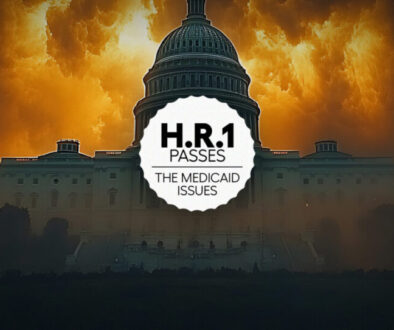Poor funding for OPEBs may lead to crisis
Mentioning the term “OPEBs” to state and local government leaders is likely to be met with a rolling of the eyes, some hand wringing, and an obvious indication they’d prefer to change the subject.
For the rest us, OPEB, or Other Post-Employment Benefits, is a little-known perk for most state and local employees. Separate from pensions, they can include potential life and health insurance, deferred compensation, and other benefits. While historically encouraged and even required by labor unions and other employee advocates, the benefits have been more poorly funded than pensions for retired workers, resulting in huge unfunded liabilities that are growing to crisis proportions.
According to the latest numbers gathered by Pew Charitable Trusts, states collectively reported $749 billion in OPEB liabilities with only about $69 billion in assets to pay for them, resulting in a funding ratio of under 10%.
“In contract, the total funded ratio for state retirement systems was 71%,” Pew said. “Pre-funding retirement benefits is a way to pay for the compensation of public employees while they are providing service rather than pushing costs for work done today years or decades into the future.”
11 states report no OPEB assets set aside
And yet, few states have done so. Eleven states reported no assets set aside while Alaska’s, Arizona’s, and Oregon’s OPEBs were fully funded. Several states that had long had no assets set aside for these benefits, such as Hawaii and Vermont, have recently started the protracted process toward adequately funding these benefits. Of the 48 states that reported OPEB liabilities in 2019, the most recent year in which figures are available, 15 have either not put aside any funds to pay for promised benefits or their available funds are negligible; 12 have a funded ratio between 1% and 10%; seven have a funded ratio of 10%-29%; and only 14 have a funded ratio of 30% or above.
“States with the highest liabilities need to have a credible and sustainable funding plan to avoid situations in which policymakers would have to decide whether to reduce benefits,” Pew said.
Unlike pension benefits, which are collectively bargained and have to be funded, there’s no legislation or requirement for states to fund OPEBs.
“It’s been treated as a pay as you go system which threatens viability,” said Rick Kaplan, chief growth officer for RetireeFirst, a New Jersey-based benefit management solutions and advocacy service provider. “And with inflation and the escalating cost of care, the numbers just get bigger and compounding year after year.”
Some local governments curtailing benefits
Some local governments have already been curtailing benefits in order to reduce their liabilities, Kaplan said.
“A lot of these benefits are contractually or collectively bargained benefits that people have worked their entire lives for and are expecting to receive,” he said. “But some states just say ‘We’re no longer offering retiree health benefits’ and they cut it and then fight with unions or become embroiled in lawsuits.”
There has been some signs of improvement, Pew found, with a more than $1 trillion collective debt at the end of 2019 being slightly reduced. Some states, such as Vermont, have taken the reins in improving the unfunded liability issue, cutting its OPEB liability by more than 43% in one year. Still, its $1.6 billion liability was reduced to about $907 million.
“It takes time and it takes everybody working together,” said Kaplan. “In Vermont, the labor unions that represented the retirees and the state got together and created a fund, and they started contributing to this fund that builds up assets over time so there’s money sitting there when they do retire.”
Using data from new reporting requirements, Pew developed a metric – known as the net amortization benchmark – to measure whether a state’s contributions are sufficient to keep the gap between OPEB assets and OPEB liabilities from growing on an annual basis. Its assessment shows that states collectively fell short of the benchmark by $30 billion in 2019, with just 10 states meeting the benchmark.
State may “face growing debt for OPEB benefits”
“If states continue to fund below this threshold, they will face growing debt for OPEB benefits,” Pew said.
Others states, including Kentucky, Michigan, and South Carolina, have relatively high OPEB liability but have also taken steps to pre-fund their promises to beneficiaries. But among states with the highest reported liabilities, Illinois, Louisiana, New Jersey, and New York, none have as yet set aside anything to pre-fund OPEB benefits, Pew found.
“The states with the highest liabilities need to have a credible and sustainable funding plan to avoid situations in which policymakers would have to decide whether to reduce benefits,” Pew said.
States that don’t pay now will face serious consequences from withdrawing promised benefits to their workers.
There’s a laundry list of things and issues, both financially and practically, that can be done but because there’s not requirement to have to fund OPEBs, it gets kicked down the road,” Kaplan said. “I don’t want to say it’s a broken system, but anyone that does just a little research can see the numbers keep getting bigger and bigger.”
Doug Bailey is a journalist and freelance writer who lives outside of Boston. He can be reached at doug.bailey@innfeedback.com.
© Entire contents copyright 2023 by InsuranceNewsNet.com Inc. All rights reserved. No part of this article may be reprinted without the expressed written consent from InsuranceNewsNet.com.
The post Poor funding for OPEBs may lead to crisis appeared first on Insurance News | InsuranceNewsNet.



